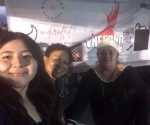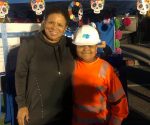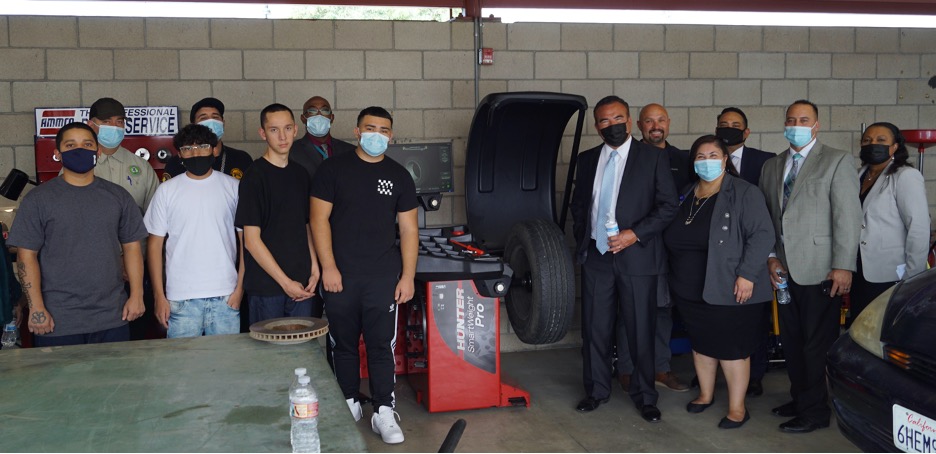By Antonio Ray Harvey | California Black Media
When the Emancipation Proclamation was signed in 1863, the Black community owned less than 1% of the United States’ total wealth, the Task Force to Study and Develop Reparation Proposals for African Americans was told during its fourth meeting.
Mehrsa Baradaran, a professor at the University of California Irvine, School of Law, shared the statistics during the “Racism in Banking, Tax, and Labor” portion of the two-day meeting on October 13.
From her perspective, the power of wealth and personal income is still unequally distributed. And that inequality, in her view, has always been allowed, preserved and compounded by laws and government policy.
“More than 150 years later, that number has barely budged,” Baradaran told the Task Force, tracing the wealth gap from the period after the Civil War when President Lincoln granted formerly enslaved Blacks their freedom to the present day.
“The gap between average White wealth and Black wealth has actually increased over the last decades. Today, across every social-economic level, Black families have a fraction of the wealth that White families have,” she said.
Baradaran has written a range of entries and books about banking law, financial inclusion, inequality, and the racial wealth gap. Her scholarship includes the books “How the Other Half Banks” and “The Color of Money: Black Banks and the Racial Wealth Gap,” both published by the Harvard University Press.
Baradaran has also published several articles on race and economics, including “Jim Crow Credit” in the Irvine Law Review, “Regulation by Hypothetical” in the Vanderbilt Law Review, and “How the Poor Got Cut Out of Banking” in the Emory Law Journal.
A 43-year-old immigrant born in Orumieh, Iran, Baradaran, testified that her work on the wealth gap in America was conducted from a “research angle” and she respectfully “submitted” her testimony “in that light,” she said.
In her research, Baradaran explained that she discovered an intentional system of financial oppression.
“This wealth chasm doesn’t abate with income or with education. In other words, this is a wealth gap that is pretty much tied to a history of exclusion and exploitation and not to be remedied by higher education and higher income,” Baradaran said.
According to a January 2020 report, the Public Policy Institute of California said African American and Latino families make up 12% of those with incomes above the 90th percentile in the state, despite comprising 43% of all families in California.
In addition, PPIC reported that such disparities mirror the fact that African American and Latino adults are overrepresented in low-wage jobs and have higher unemployment rates, and African American adults are less likely to be in the labor force.
Many issues support these activities that range from disparities around education, local job opportunities, and incarceration to discrimination in the labor market, according to PPIC.
“While California’s economy outperforms the nation’s, its level of income inequality exceeds that of all but five states,” the report stated.
“Without target policies, it will continue to grow,” Baradaran said of the wealth gap. “And I want to be clear of how this wealth gap will continue to grow. It was created, maintained, and perpetuated through public policy at the federal, state, and local levels. Black men and women have been shut out of most avenues of middle-class creations. Black homes, farms, and savings were not given the full protection of the law. Especially as these properties were subjected to racial terrorism. The American middle-class was not created that way (to support Black communities).”
A June 2018 working paper from the Opportunity and Inclusive Growth Institute written by economists familiar with moderate-to-weak Black wealth backs up Baradaran’s assessment.
Published by the Federal Reserve Bank of Minneapolis, the authors of the report wrote that strategies to deny Blacks access to wealth started at the beginning of the Reconstruction era, picked up around the civil rights movement, and resurfaced around the financial crisis of the late 2000s.
Authored by Moritz Kuhn, Moritz Schularick, and Ulrike I. Steins, the “Income and Wealth Inequality in America, 1949-2016” explains a close analysis of racial inequality, pre-and post-civil rights eras.
The economists wrote that the median Black household has less than 11% of the wealth of the median White household, which is about $15,000 versus $140,000 in 2016 prices.
“The overall summary is bleak,” the report states. “The historical data also reveal that no progress has been made in reducing income and wealth inequalities between black and white households over the past 70 years.”
Baradaran recently participated in the virtual symposium, “Racism and the Economy: Focus on the Wealth Divide” hosted by 12 District Banks of the Federal Reserve System, which includes the Federal Reserve Bank of Minneapolis.
There are some positives that are not typically included in discussions about the challenges Blacks have experience historically in efforts to obtain wealth, Baradaran said. Many African Americans, specifically in California, were able to subvert the systems that discriminated against them.
“Black institutions have been creative and innovative serving their communities in a hostile climate,” Baradaran said. “I’ve written a book about the long history of entrepreneurship, self-help, and mutual uplift. Historically Black Colleges and Universities have provided stellar education and Black banks have supported Black businesses, churches, and families.”
California’s Assembly Bill (AB) 3121, titled “The Task Force to Study and Develop Reparation Proposals for African Americans,” created a nine-member commission to investigate inequity in education, labor, wealth, housing, tax, and environmental justice.
All of these areas were covered with expert testimony during the two-day meeting held on Oct. 12 and Oct. 13. The task force is charged with exploring California’s involvement in slavery, segregation, and the historic denial of Black citizens’ constitutional rights.
Fifty years after the federal Fair Housing Act eliminated racial discrimination in lending, the Black community continues to be denied mortgage loans at rates much higher than their White counterparts.
“Banks and corporations have engaged in lending and hiring practices that helped to solidify patterns of racial inequality,” Jacqueline Jones, a history professor from the University of Texas told the Task Force.
The Racism in Banking, Tax and Labor segment also featured testimonies by Williams Spriggs (former chair of the Department of Economics at Howard University. Spriggs now serves as chief economist to the AFL-CIO), Thomas Craemer (public policy professor at the University of Connecticut), and Lawrence Lucas (U.S. Department of Agriculture Coalition of Minority Employees).
The Task Force to Study and Develop Reparation Proposals for African Americans will conduct its fifth and final meeting of 2021 on Dec. 6 and Dec.7.
 Westside Story Newspaper – Online The News of The Empire – Sharing the Quest for Excellence
Westside Story Newspaper – Online The News of The Empire – Sharing the Quest for Excellence










